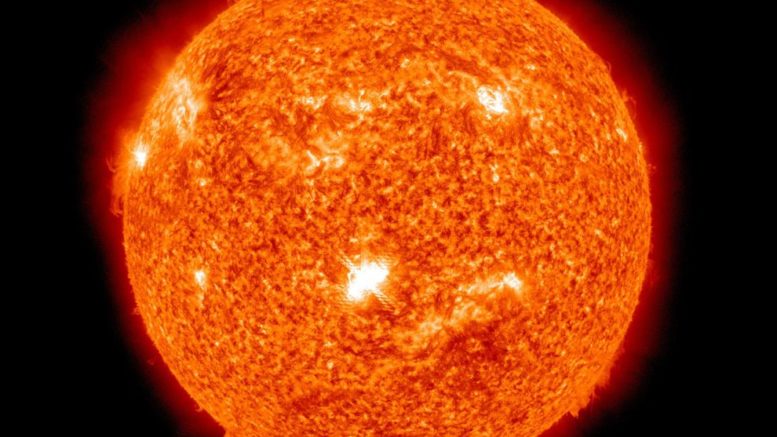You might have seen the recent articles about the sun entering into a period in its cycle called the solar minimum and the potentially “cataclysmic” events associated with this. We are here to help you better understand what the solar minimum actually is, the role it plays in the solar lifecycle, and talk a bit more in depth inregards to separating fact from fiction.
The solar minimum is the period of least solar activity in the 11-year solar cycle of the Sun. During this time, sunspot and solar flare activity diminishes, and often does not occur for days at a time. The date of the minimum is described by a smoothed average over 12 months of sunspot activity, so identifying the date of the solar minimum usually can only happen 6 months after the minimum takes place. Scientists have noted that when there are indeed solar minima, there has been a correlated with changes in climate on Earth.
The Sun works on an11 and 400 year cycle, in which the extremes are called Solar Maximums and Solar Minimums. The maximums are the complete opposites of these minimums, with there being an increased likelihood of space weather, increased aurora activity, and a plethora of sunspots being seen.
While there are many effects of the solar minimum and solar maximum that the Earth feels, it is worth noting that the last time that the sun underwent a “deep solar minimum” was in 2008 and 2009. Scientists found that 73% of the days in 2008 had no observable sunspots, which scientists thought was the lowest it could go. However, sunspot counts for 2009 dropped even lower with solar physicists and similar scientists coming to the conclusion that that period was a very deep solar minimum. During. this period of 2008 to 2009, it was said, “This is the quietest sun we’ve seen in almost a century,” agreed sunspot expert David Hathaway of the National Space Science and Technology Center NASA/Marshall Space Flight Center.[1]
With that said, yes there will be affects that the solar minimum imparts on Earth, the weather, and atmosphere. One effect of this period is the reduction in solar flares, which means a change in solar weather and a smaller chance to see the Aurora Borealis. Scientists have been aware that 2019 and 2020 would be a period in which the sun could be quieter than usual. They did make this known, with the exact dates of this quiet period unknown as specific dates and years vary between cycles. During solar minimums, “solar ultraviolet radiation decreases, but the effect of this primarily hits the stratosphere and higher altitudes. It causes Earth’s atmosphere to shrink slightly, which reduces drag on satellites. Conversely, the increase in UV radiation during solar maximum contributes to rainfall, but the effect on temperature is negligible.”[2] Volcanic activity is not necessarily related to solar activity, so the Pacific Northwest volcanos. shouldn’t be too affected.
What is known is that a solar minimum. does provide a smaller shielding to astronauts from other cosmic rays in space as well as not going to cause a big shift in temperature. NASA’s Global Climate Change team even said, “The warming caused by the greenhouse gas emissions from the human burning of fossil fuels is six times greater than the possible decades-long cooling from a prolonged Grand Solar Minimum.”[3]
The media might state that this period of solar activity means doom, but the only real effect is that it would change the temperature slightly and make it a bit more risky for astronauts to travel.
Sources And Further Reading
[1] = https://science.nasa.gov/science-news
[2] = https://www.sciencealert.com/we-re-about-to-experience-solar-minimum-here-s-what-that-really-means
[3] = https://climate.nasa.gov/blog/2953/there-is-no-impending-mini-ice-age/
https://www.cnn.com/2020/05/19/world/solar-minimum-scn-trnd/index.html

Leave a comment